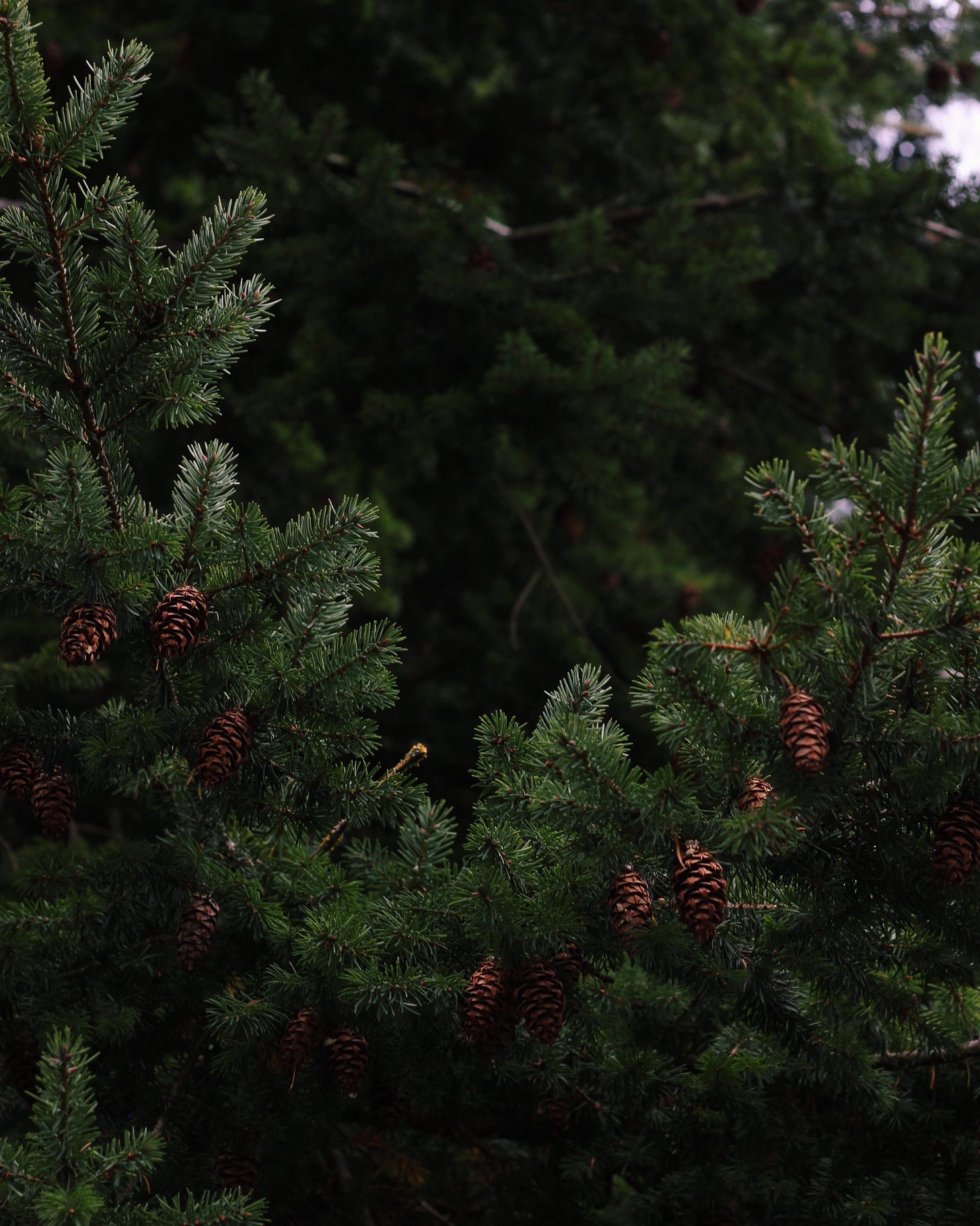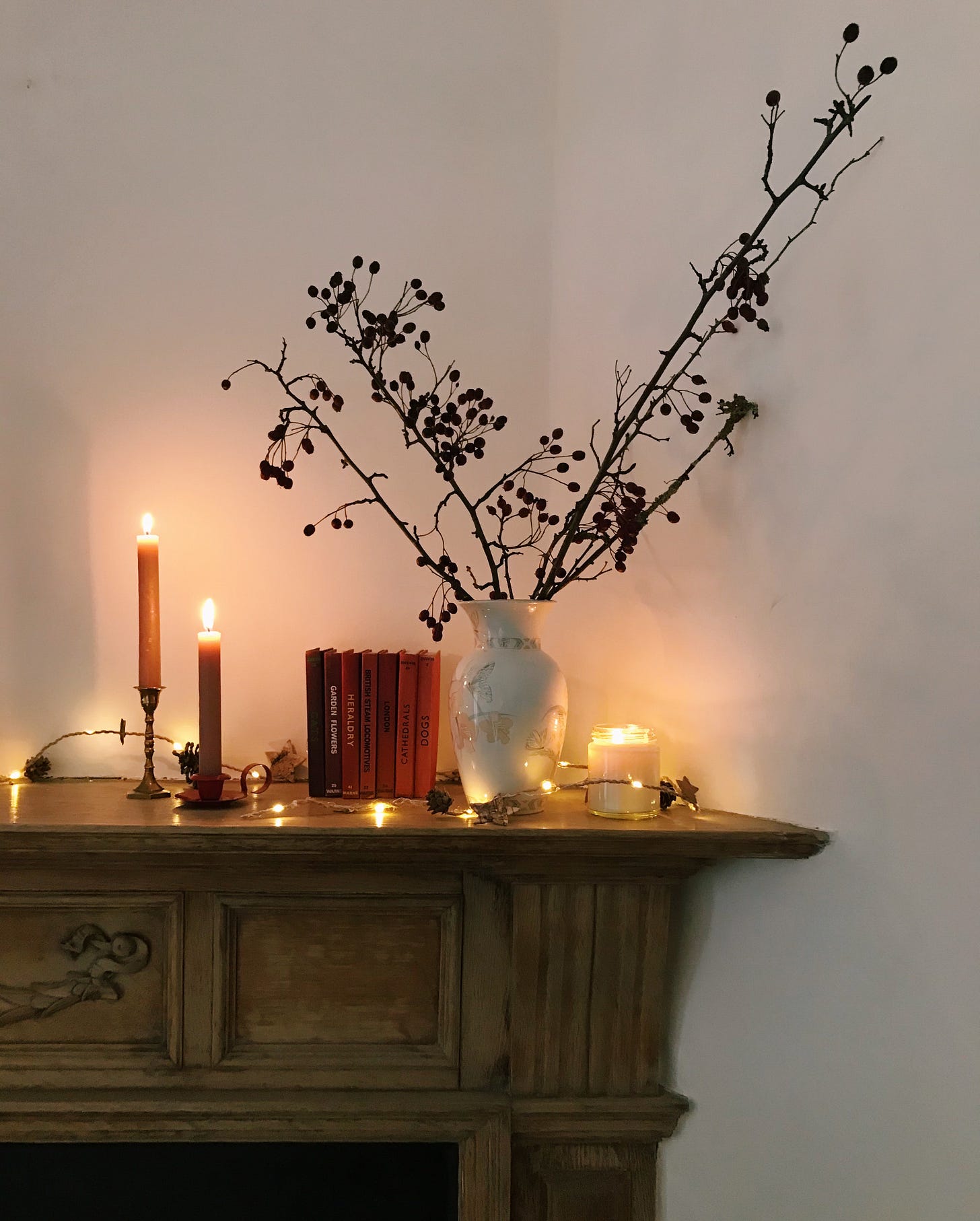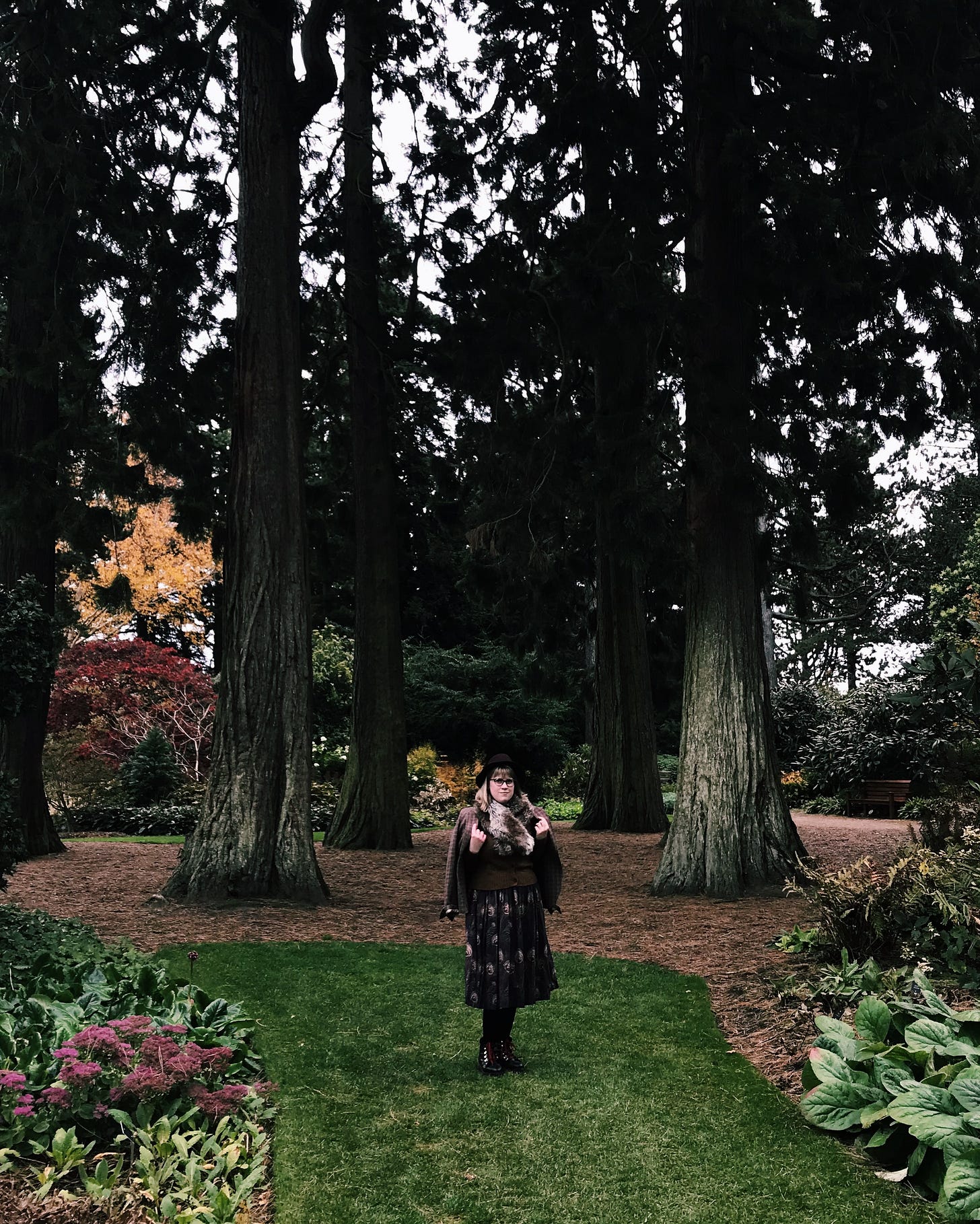December Nature Notes to Notice (Part One)
The transition from Autumn to Winter was brief but dramatic, Storm Arwen removing the leaves from the trees in one fell swoop last week. The branches may be bare but berries and evergreens are still plentiful. You might expect this to be a quieter season for wildlife, but in Britain the cold, dark months mean animals are more active – and the surroundings being more exposed makes them easier to spot.
Land
The most famous of all evergreens, surely, is the fir tree. There are so many different varieties to admire. Douglas fir trees are my favourite – your typical Christmas tree, native to North America. It has beautiful cones and the needles can be used to make a citrus scented pine sugar, whizzed to a fine dust in a blender and left to infuse and use in bakes (like my Douglas fir shortbread) or a pine tea steeped in boiling water.
Ilex berries – better known as holly – are, of course, the other evergreen most strongly associated with this time of year. The plant is steeped in symbolism: our ancestors have been bringing holly and evergreens inside for thousands of years, a reminder of hope, renewal and springtime to come during the darkest days of Winter. The Celts thought of holly as a symbol of good luck, and in wreath form they represent friendship and faithful love.
There’s beauty in the bareness too: as the leaves disappear, the starkness of branches, berries and pine cones is all the more beautiful. Larch trees have lost all their needles by this time of year, leaving behind long bare limbs with their sweet miniature cones. They are my favourite to collect - especially when covered in lichens - and make a lovely Wintery display at home.
Snowberries are plentiful, the top-heavy berries dancing on thin branches in the breeze. Clumps of evergreen, parasitic mistletoe are easy to spot and in fruit this month. In the past the poisonous plant was actually hung above doors to prevent spirits from entering the home; however, thanks to the Celts and their association of mistletoe with fertility, the plant took on its modern meaning as a prompt for couples to kiss underneath at Christmas.
There are still some flowers too: in the garden, hellebores are beginning to bloom. The Christmas rose arrives just in time for the festive season with its hardy white blooms. Wildflowers such as Winter heliotrope can be found in damp and shady areas and form a surprising carpet of greenery. Ferns can still be found and add welcome texture and interest amidst Winter’s browns and greys.
As far as wildlife is concerned, the squirrels are busy gathering food for the long months ahead, making the most of darkness. Be sure to protect your Spring bulbs or they might just make a squirrel-sized snack. Some British species of wildlife turn white in winter, a relic of a historical colder climate. Not the best camouflage these days but it does make them easier to spot – take the mountain hare with its blue-ish white coat. Walk slowly and minimise noise to spot them in upland areas.






